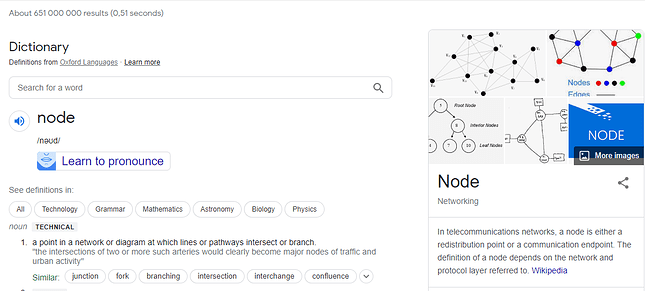Can the developers enable drafting different pattern pieces in one sheet
Hello Hailah, I do this by placing a node at distance and angle from a place on a previous pattern piece and make the line none. This way, I can I can move the 2nd pattern piece to join up with another by changing the distance and angle.
Other than that, I believe that @Douglas is considering such an option.
That being an option to the Move tool to align, or snap if you will , the destination objects to the source objects.
If I take that to mean “pattern pieces” really being “draft blocks”… which are still incorrectly name named in the initial “New” pattern dialog:
This is incorrect:
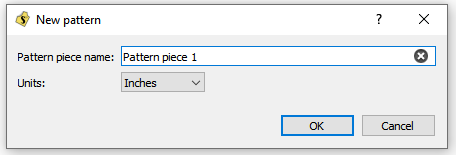
It should read Draft block name: [ draft block 1].
I had this update in the works before I had a catastrophic hard drive failure and lost the work. ![]()
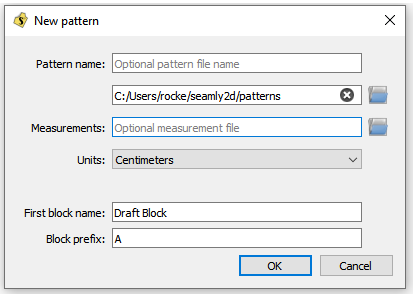
That being said… Technically they already are on the same sheet, but that’s beyond the scope here - so No. We can’t have more than 1 draft block “ACTIVE” on the draft workspace (sheet, board). It wouldn’t even make sense as then it would simply mean there would be only 1 draft block, which as @Grace pointed out you can already accomplish.
I should also note that from any draft block, you can create any number of “Pattern Pieces”… which were formerly refereed to as “Details” or the “Workpiece”. For ex: here’s something I’m currently working on… this is the sleeve “draft block” followed by the 2 “pattern pieces” created from it:
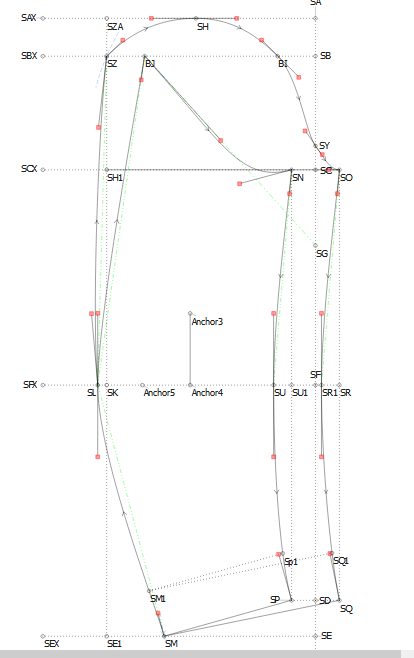
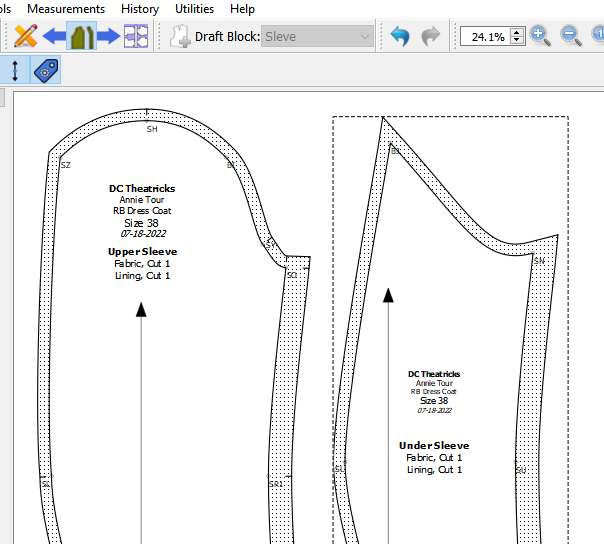
Hi Grace, me again! Just trawling the forum for info on how to draft all blocks on the same board… any chance you could elaborate on the above, please? For example, would you use the underarm point on the side seam of a front bodice block to connect to the back bodice block, so you can unite them along the side seam if needed? In which case, what would you do if you wanted to unite the bodice blocks along the shoulder seam instead?
Also, by ‘node’ above, do you mean ‘point’? I’m still unsure of what terminology everyone uses.
Sorry for all the questions, but it looks like I’m going to have to re-draft all my blocks on the same board so I really want to make sure I get it right this time!
Thank you 
The term is used, at least in part, as a reference to the Insert Node tool that allows one to add points and curves that had been missed while tracing off a pattern piece, (I have even used it to add points for notches that I hadn’t thought to include in the draft until I’d traced the piece off.) As such, node does mean point but also means curve of any variety.
As to your main question, I’ll only say that at my low skill level I see two options. Draft it multiple times using different join points, (shoulder, underarm point, ???,) or draft them separated by long invisible lines, & bring them together for different effects using the Move Objects tool with fancy formulae. But I’m sure @Grace has a lot more to add here.
![]()
Thank you as always for your help and advice! I’ll be very interested to hear how Grace does it. I just want to make sure I don’t end up having to re-draft all my blocks a third time!
Hmmmm… this brings up a good point. No pun intended. ![]() From a programming perspective I understand the use of the term node, but maybe we could find a better term that is more descriptive? Maybe “object”?.. “item”?
From a programming perspective I understand the use of the term node, but maybe we could find a better term that is more descriptive? Maybe “object”?.. “item”?
![]()
![]()
![]()
No, I think Point or Node are discriptive enough. Personally, I like the term Node because it’s short to spell and describes an object in the process of making the pattern, while point would describe something that is pointy… like the bustpoint.
I’m sorry that it’s taking me so long to reply, but we’ve been without electricity and water since last Monday, so I can only check when the generator is running which is only a few hours a day.
Starting with the last… I’ll have a look and see if I can do something to place your pattern onto one drawing board… It may not work, but we’ll see.
Firstly, let me tell you that I’m not a professional patternmaker. I only learnt after I found Seamly2D and it’s still an on-going learning curve.
Yes, I normally use the underarm seam and do the move and rotate that @Pneumarian mentioned to join at the shoulder seam. Here is an example of the rotated back onto the front shoulder in a mens’ jacket to create the collar:
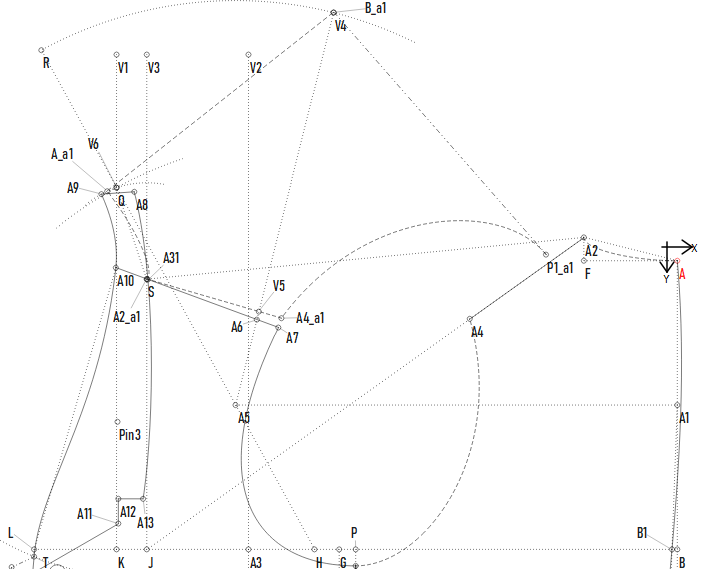
This is a particularly complex move because it needs the shoulder to be opened a bit on the shoulder tip so that the collar fits at the neck line but is slightly wider at the outer edge to provide the roll without pinching in the rest of the garment, when worn - so not really what you are wanting to do, but the basic principles are the same and can only be done properly if the pattern pieces are all on one board. Otherwise, you’ll find yourself guessing where nodes and lines need to be placed, to use as reference in your formulas.
I love questions, so please don’t apologise ![]() Your questions will help others in future, as did those asked in the past help you.
Your questions will help others in future, as did those asked in the past help you.
Oh my god, I can’t believe you’re still taking the time to reply to posts, thank you so much! I hope you have water and power now, wherever in the world you are?!
Honestly I really appreciate it, thank you. Seamly is so great and I love it until I come across a a seemingly insurmountable problem, but you guys help so much! I wouldn’t have lasted five minutes with it if this forum didn’t exist, ha ha
![]() I’m in South Africa. We have both at the moment, the town’s water pumps are running off borrowed generators & a temporary repair has been done to give up power until they have replaced everything in the main sub-station that exploded and burnt.
I’m in South Africa. We have both at the moment, the town’s water pumps are running off borrowed generators & a temporary repair has been done to give up power until they have replaced everything in the main sub-station that exploded and burnt.
Me too ![]()
I haven’t had a chance to look at your pattern yet. I’ll try for tomorrow.
Yes, but as far as a path - seam or internal - goes, a node can also be a curve. While most vector apps like Inkscape or Coreldraw refer to points along a path as nodes, they don’t include curves as nodes. They use the nodes as the endpoints of curves. I just thought since @hayleyneil asked if you meant point when referring to a “node”… might be unaware that curves are also nodes, and maybe the terminology could be clearer. Maybe the insert node tooltips could be more descriptive?
Also with Seamly2D what do we call those same tool things that we add to Groups, or Op tools like Move, Mirror and Rotate - do we call them nodes? IMO it’s somewhat confusing to call a tool you add to a path a node, while we refer to the same tools added to Groups or Ops tools as items or objects.
I’m also trying to think ahead… where I have in mind an Object Manager - not a Node Manager - that would provide info about all the draft tool objects. Some of that info would be what pattern pieces and / or paths an object is used in.
I think that one should turn to the dictionary for help in this matter. A quick google search delivered this:
a point in a network or diagram at which lines or pathways intersect or branch.
“the intersections of two or more such arteries would clearly become major nodes of traffic and urban activity”
So I’m happy to think of a node as a point that other things connect to, a curve as a curve, a path as a path which follows connected nodes, lines and curves, and an object as a collection of nodes, lines and curves.
However, I’ll be happy with whatever you decide.
Judging by:
Insert Node. Keys: IN
Add objects to the tracing of an existing pattern piece. If you have many items to add you should probably just re-trace the piece, because this only adds one node at a time. Click the object you would like to add to the tracing of the pattern. When the dialog pops up select which pattern piece the node belongs to. You can now navigate over to the Piece Mode, pull up the pattern piece dialog to move the node to its proper place in the list, & activate it.
I appear to favor object. I feel like item may better indicate @Douglas’s description of what’s going on in the back end, but object better aligns with the general users’ experience. ![]()
![]()
![]()
I actually prefer Object. Like I said, eventually I want nto implement a (tool) Object Manager that will show properties, and where the objects are used. Generally the underlying code refers to tools as objects with a tool id and if applicable an object id. When tools (objects) are added to tables / lists the code usually refers to them as items. And I agree that for first tine users it’s probably clearer that they are adding objects to a path, not just points. It’s also possible that maybe in the future other objects besides points and curves could be added to a path. For example - a dart, where instead of having to add all the points and / or curves that makeup a dart, we have a dart tool that adds a whole dart automatically. In other words, it would be another object that is added to a path, not just a node… which is generally accepted as a point.
In this instance, I agree that all nodes, curves, lines, whatever, are objects. Tools are only used to create them. So, yes, an “Object Manager” sounds perfectly feasable to me ![]()
I forgot too… that before I started working on Seamly, on my own fork I had added an object list to the Groups Manager… which when I update the grouos for Seamly I will make the Group Manager a tree list widget so you can just expand a group to see what objects are in it, rather than displaying the objects in another window.
I’m really happy to say that our electricity has been restored these past 2 hours 

